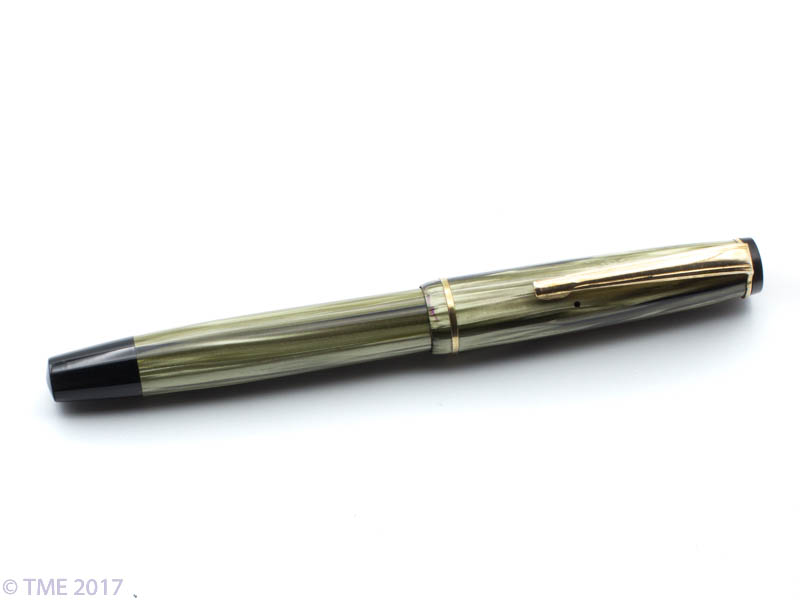“Merlin”
1950s
About This Model
There were numerous minor fountain pen manufacturers in Germany, and they lasted, as a rule, longer than minor American companies. Some started in the 1800s, and others after WWI. Brause is a very old German firm, first begun in 1850 in Iserlohn as a dip pen nib manufacturer. Their production of fountain pens began in the 1950s and were almost exclusively school pens, recognized by a blue band over the cap ring. Very little is known about Edel, another such firm. Edel was a small German company that made parts for export to the Netherlands before WWII. The pens were assembled and sold in the Netherlands post-WWII, then effectively disappeared, until a large trunk full of the parts was discovered in the early 2000s, leading to more than 100 pens making it to market. Geha, shortened from Gebrüder Hartmann, was a stationery products company, in Hannover, Germany; founded just after WWI. It produced a wide range of ffice products and machines, and war materiel during WWII. Moving to new products in 1949, Geha began producing fountain pens, most of them student level. They did have two interesting innovations: an inlaid nib called a Goldschwinge, and a reserve tank below the piston. Geha became the first German company to offer cartridge-fillers, and even maintained their reserve capacity in these pens with the use of a second short cartridge. Pelikan purchased Geha in 1990. and it was folded into Pelikan by 1995. There is very little information available about Merlin fountain pens. The available information was found by Richard Binder, who noted that a small family business in Germany made the parts, which were assembled in the Netherlands for the Dutch market. After the founder's demise, the remaining inventory was sold to Andreas Lambrou and a partner, who used this as the basis to found Classic Pens Ltd in the 1990s. Binder, later, made "several hundred" Merlin 33 and Merlina pens available for sale. The noteworthy part of the Merlin story is that they were available in a huge variety of colors, at least 38. They are nice, well made, smaller pens.
About This Pen
Merlins, like many pens from Europe’s wartime and the immediate postwar years, have incompletely defined histories. It is known that they were made by one of very many small German companies and that thousands of Merlin parts were bought by a Dutch concern that marketed them. They were interesting, well-made button fillers from the 1950s, at 11.7cm long a bit smaller than many, but of very substantial celluloid and available in what is said to be 56 different colors and patterns. This pen is strikingly similar to every Merlin I’ve seen but is missing the imprint; it is assumed, but not actually known, to be a Merlin, hence its asterisked name. Its color is largely green, in long marbled waves. The gold trim is clean and unmarked. The nib, which is presumably not a Merlin nib since it does not carry a Merlin imprint, is marked as being 585 gold. It writes a very smooth and wet fine/medium. It shows a few signs of light wear, and will be a very durable everyday pen.
Price: $62 Sold





